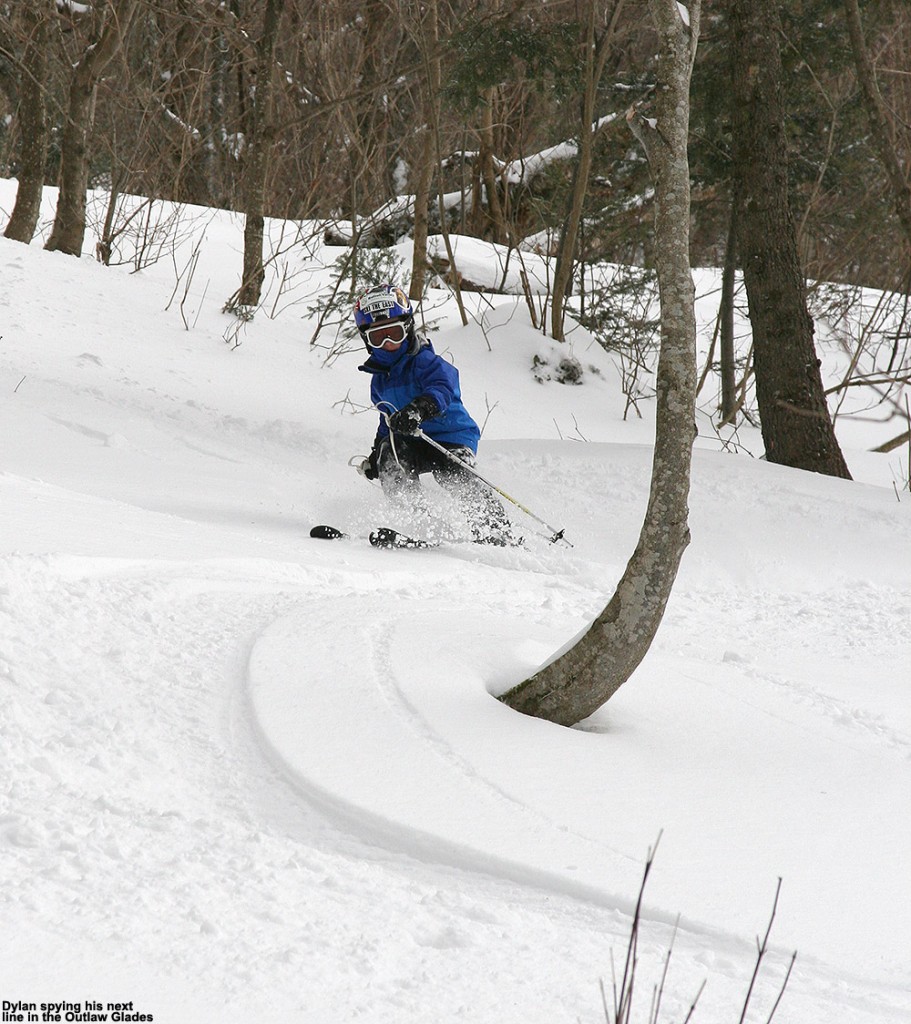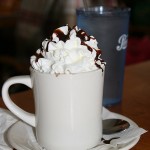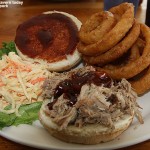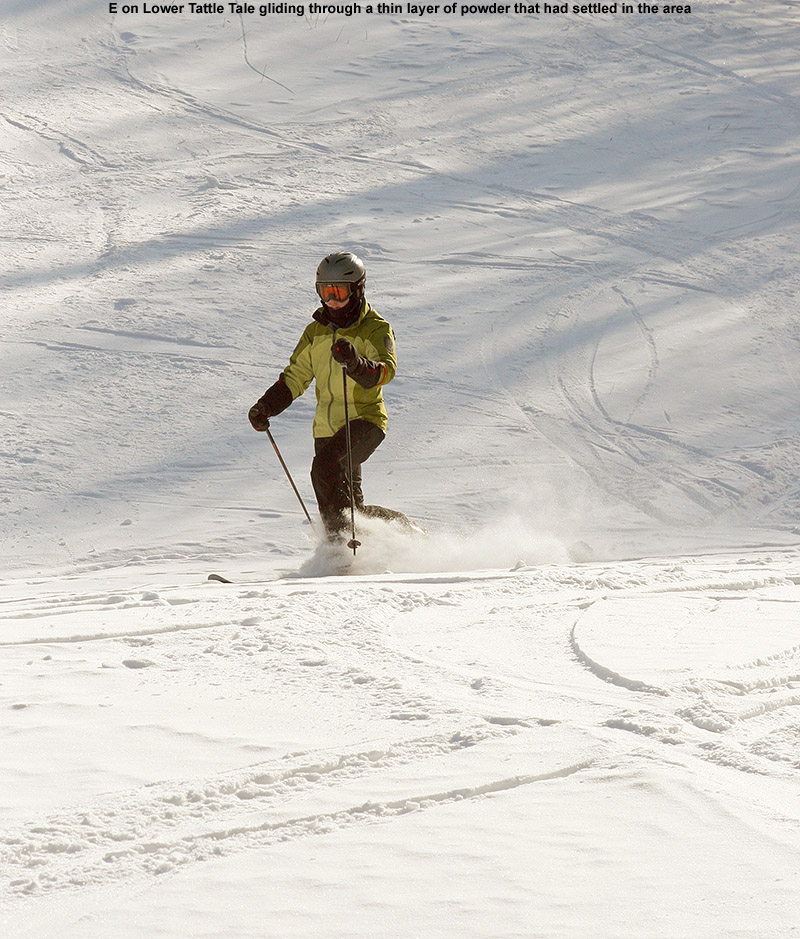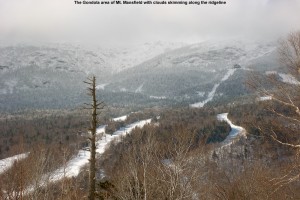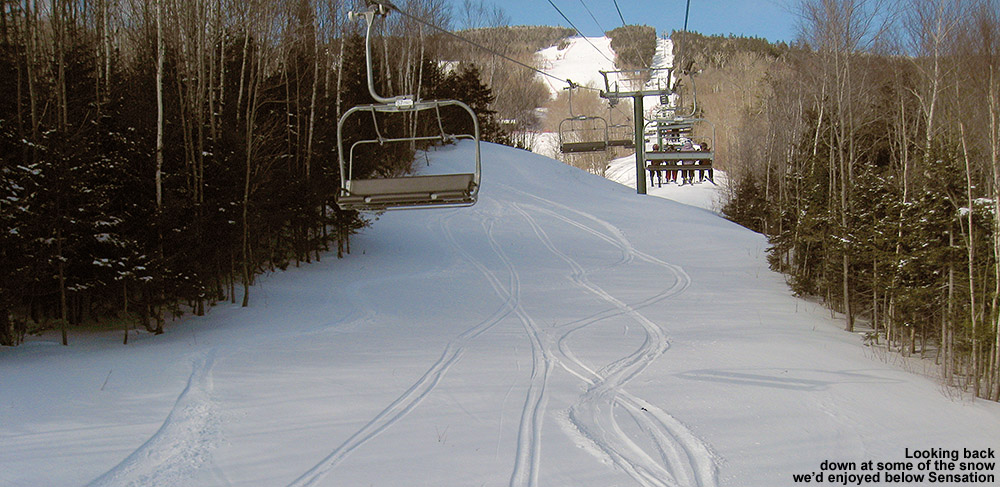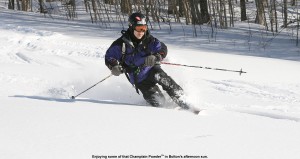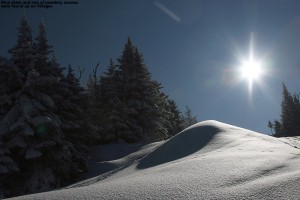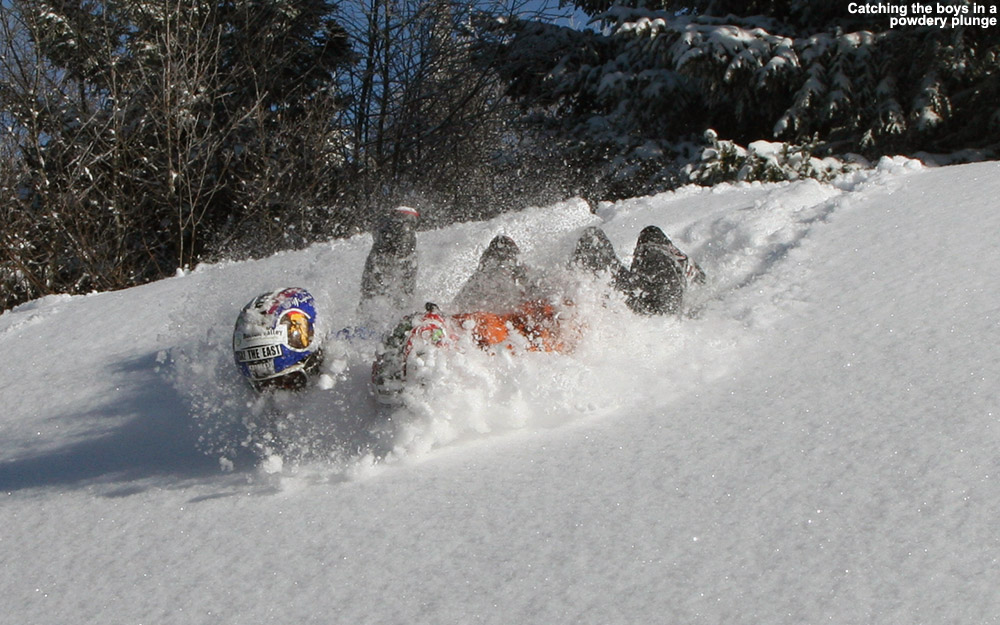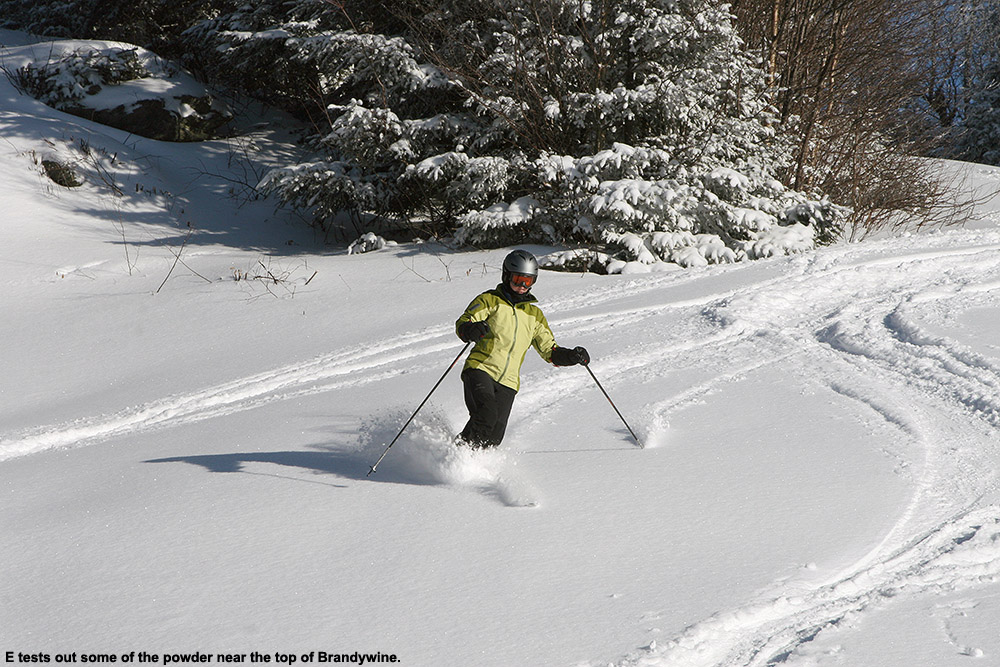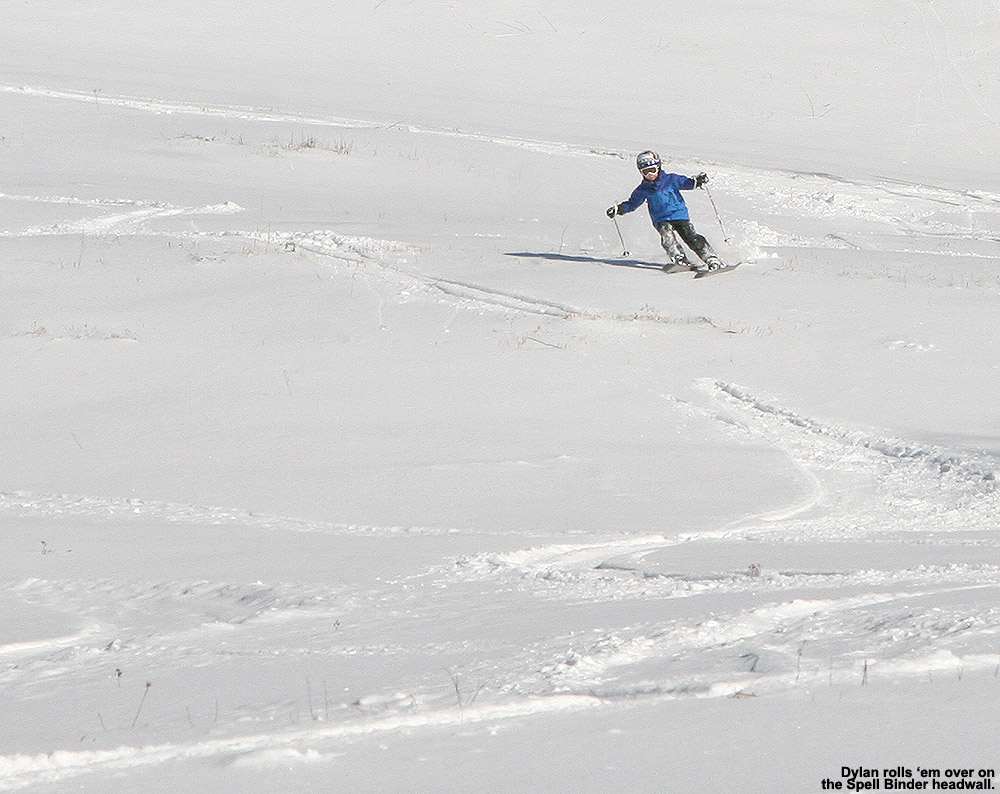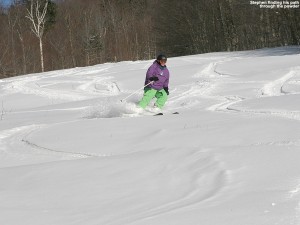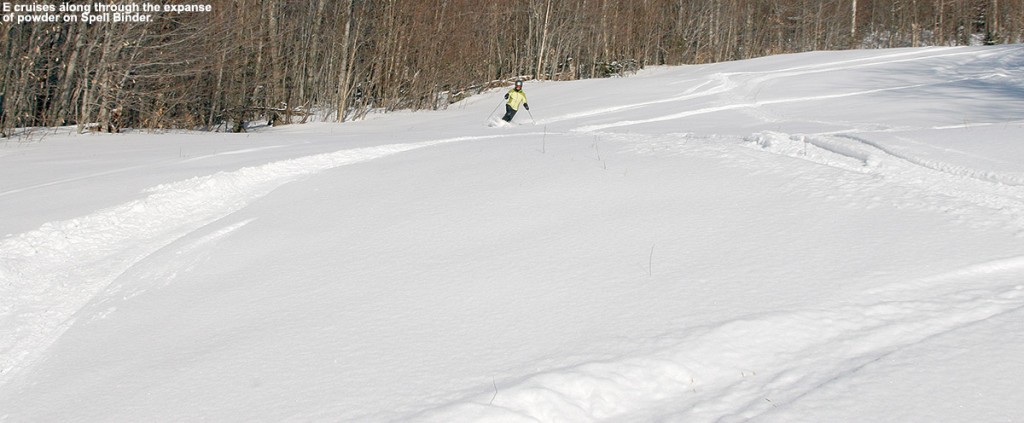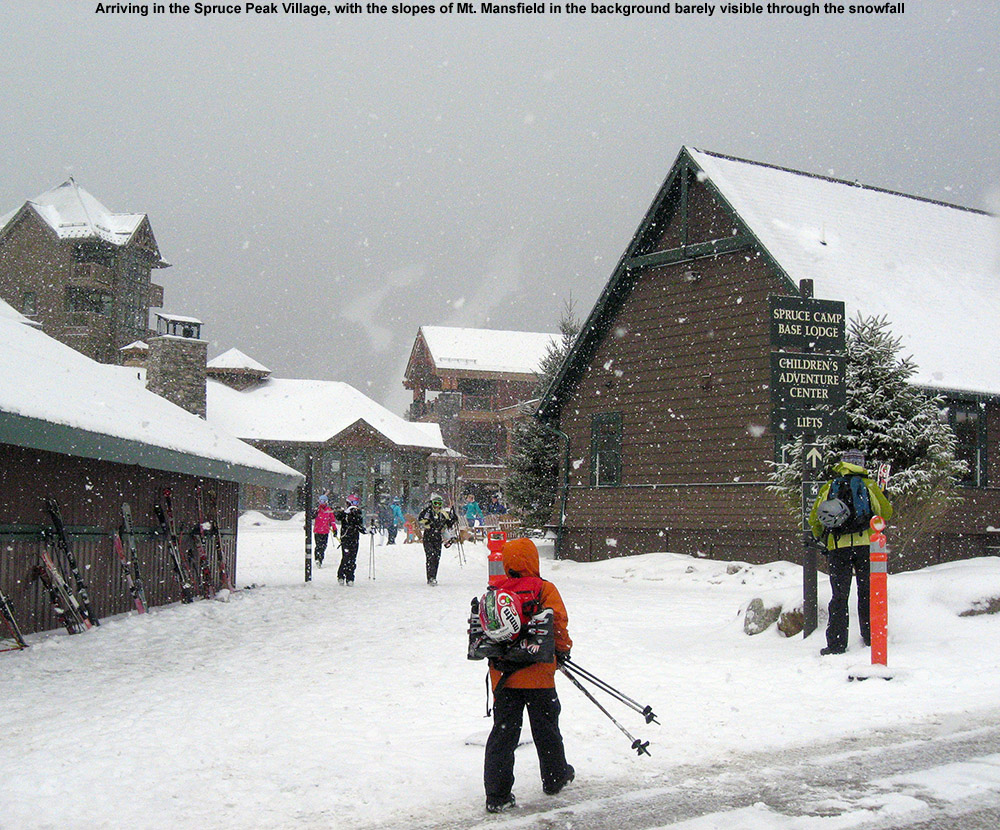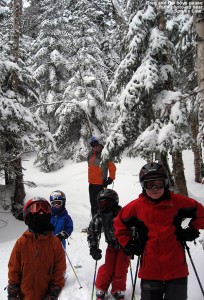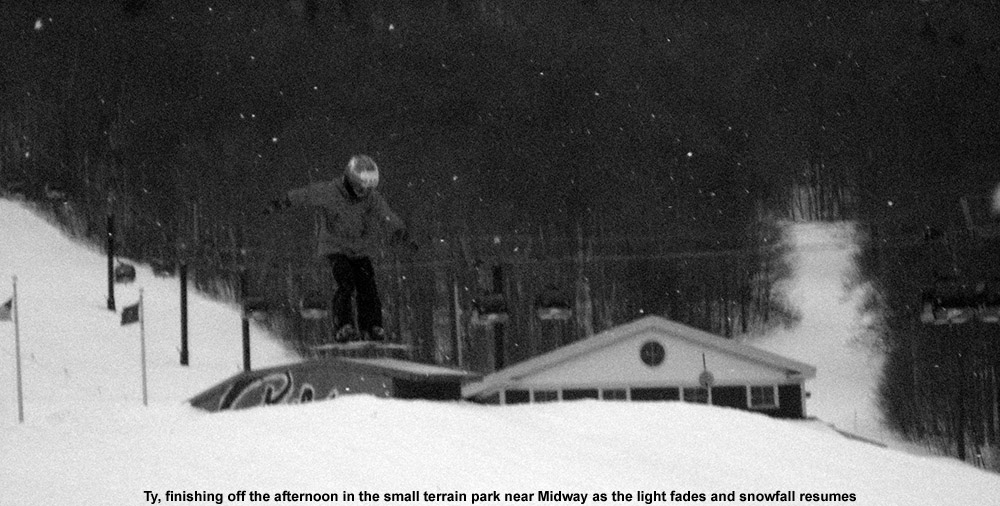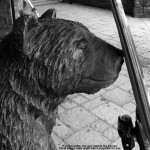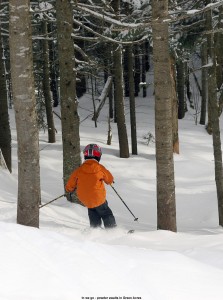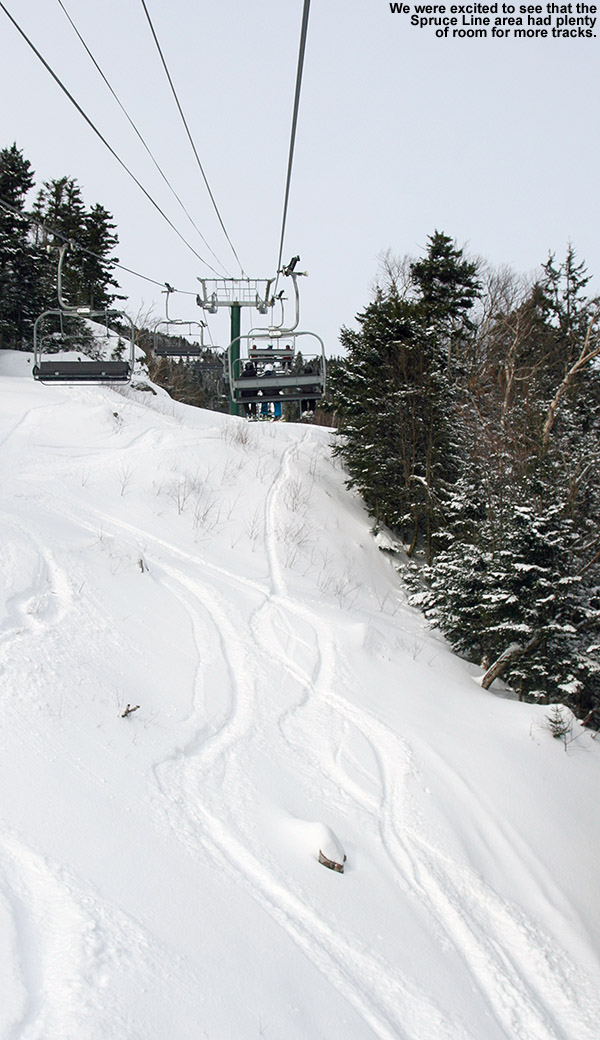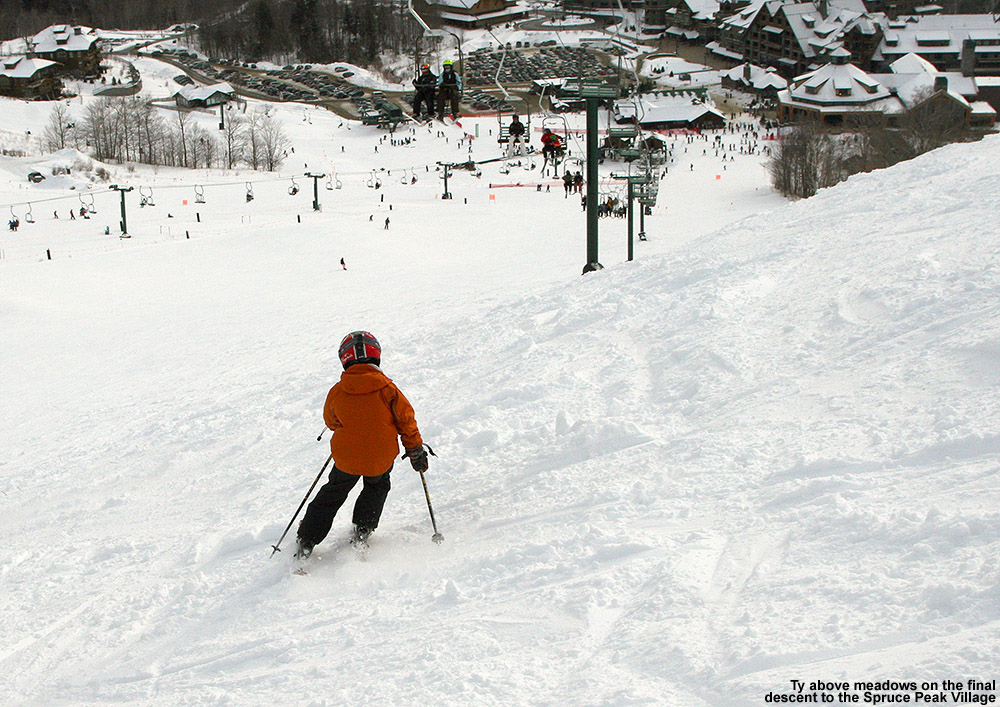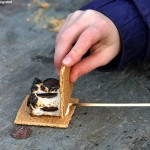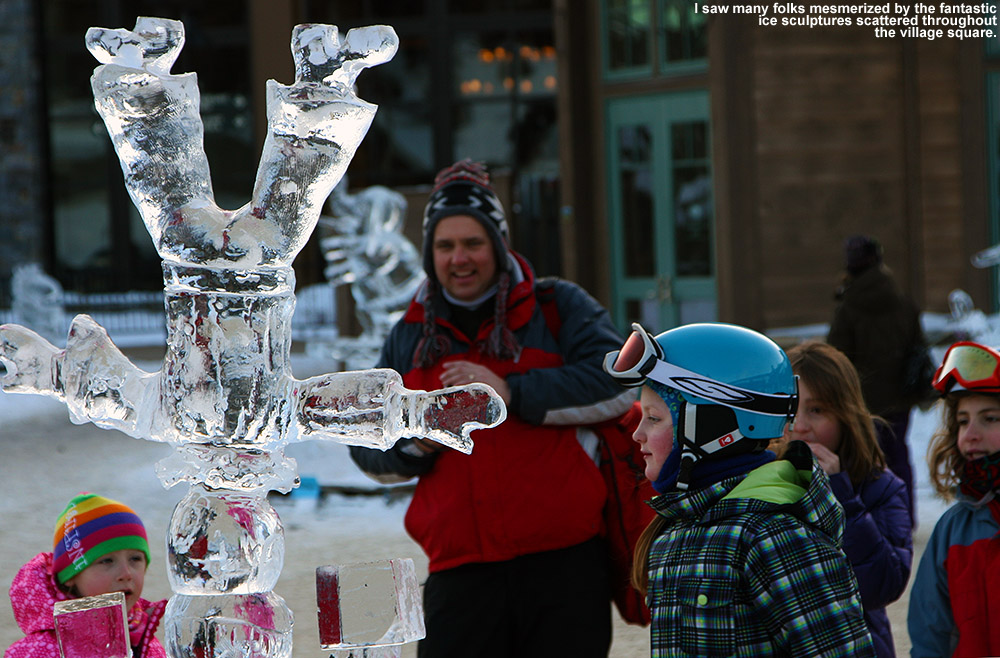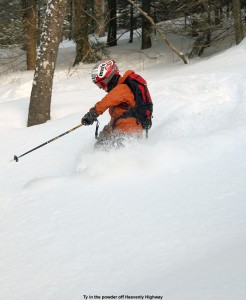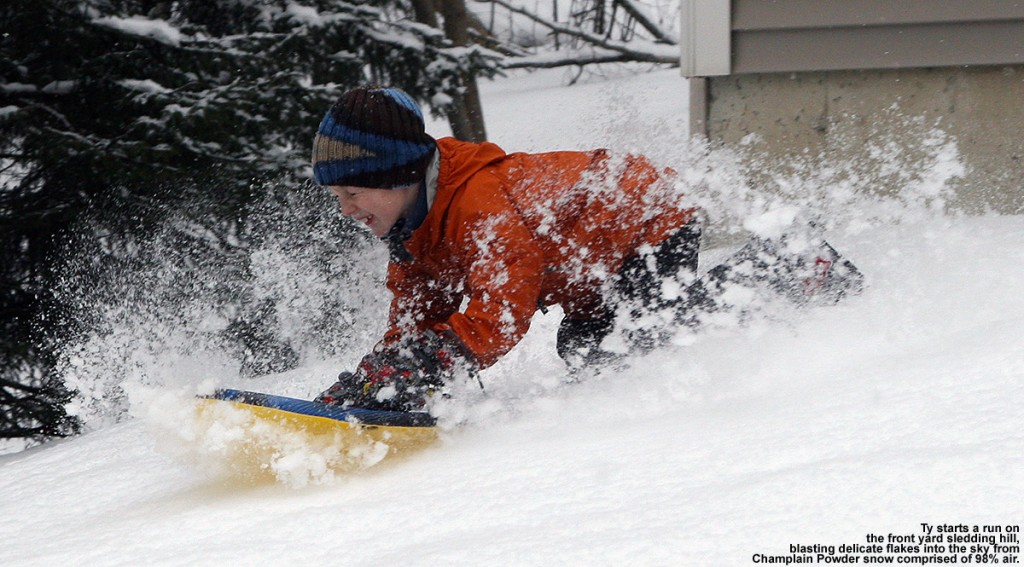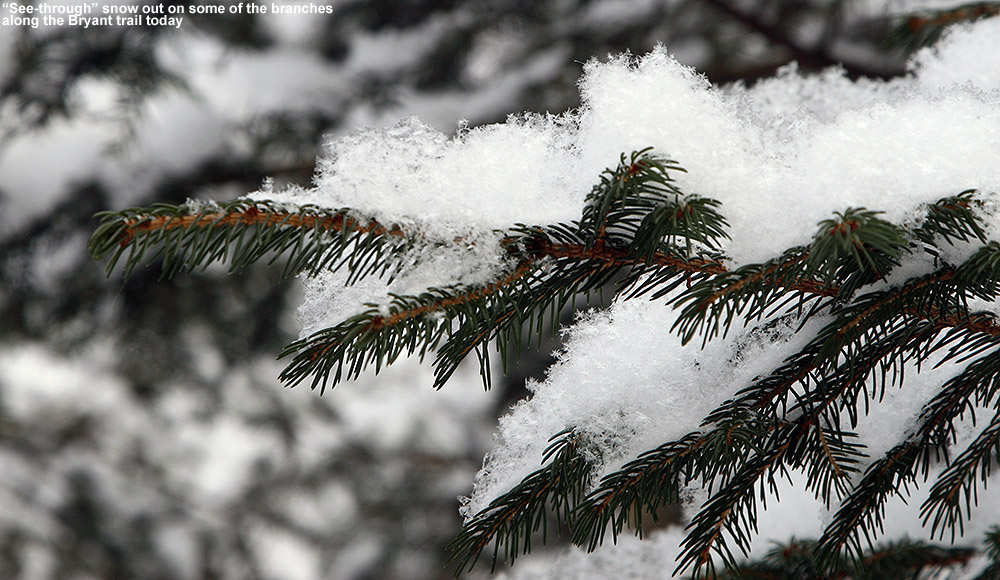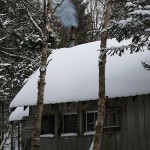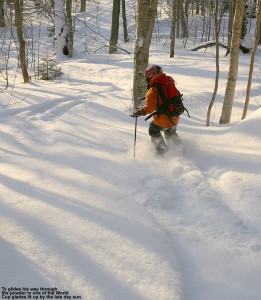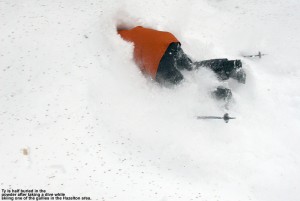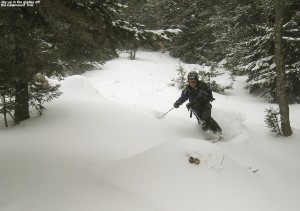
During yesterday’s outing at Bolton, we found decent powder above roughly the 2,000’ level, and ended up skiing several laps off Wilderness to take advantage of the good snow. With that in mind, we decided to head out onto the backcountry network today to get in some additional powder skiing. The plan was to begin by riding the Wilderness Lift for a quick elevation assist, then transit on Heavenly Highway to a glade along the Catamount Trail that I’d last skied on January 22nd, 2011. I’ve brought Ty out on Heavenly Highway before, but this would be the first opportunity to get out there with the whole family at once, so that aspect was very exciting. Dylan’s touring range has grown by leaps and bounds over the past couple of seasons, and it seemed like he was ready for a tour this size. With a planned route that would encompass 4 to 5 miles, it would likely be the longest ski tour that either of the boys had done, but with a mile of distance and 1,000’ of vertical coming from the Wilderness Lift, it seemed manageable. The boys each got two packs of GU energy gel, which were stashed in the side pockets of their ski pants to quickly mitigate any concerns about bonking out on the tour. The boys both like the GU (at least the vanilla bean) a lot; we’ve found it helpful for mountain biking in the off season, and it worked quite well for Dylan on our ski tour at Pico in October.
Although not quite as warm as yesterday’s highs in the 30s F, the forecast was for temperatures in the upper 20s F and generally clear skies, so weather wasn’t expected to be an issue on the tour. The Wilderness Lift wasn’t opening until 10:00 A.M., so we had plenty of preparation time in the morning. I cooked up a typical ski day big breakfast to ensure the boys would be maxed out on energy, and we loaded up all the gear. Arriving up in the Village in the mid morning period, we found that the resort was hopping with holiday visitors. I dropped E and the boys off at the ski patrol building at the base of Wilderness, and parked in the tennis court lot down along the Broadway trail. The village lots were filling up fast, but they hadn’t overflowed into the tennis court lot yet; it was just me and a couple other cars parking for Nordic/backcountry activities.
I got my gear on and headed up to find E getting the skis ready and helping out the boys with theirs. The boys’ Telemark skis are still in the three pin format, so getting them on can be a little tricky. That process combined with having to negotiate a lift ride with a backcountry pack plus a child, makes it E’s least favorite part of one of these types of outings, but everyone got loaded, had a good ride, and disembarked at the Wilderness Summit without incident. Once off the lift, E was able to relax and enjoy the rest of the tour.
We skied over to the Heavenly Highway entrance, and strapped on everyone’s skins for the undulating trip across to the Catamount Trail. As we started along, E commented that it seemed like we could do this part without skins if we wanted, but having done parts of that myself before, I assured her that it was much more fun having the skins on. There are enough dips and rolls that you appreciate not having to herring bone up every rise. Dylan took point on our travels across Heavenly Highway, and actually kept a decent pace. It wasn’t long before he decided that he wanted to remove his helmet to cool down a bit.
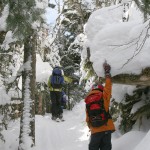
We found tremendous snow formations in the usual sheltered spots along the Heavenly Highway – some stacks of snow on the trees were two to three feet high, revealing just how much snow had built up from recent storms. Ty probed one stack by punching his pole way up through it, and then Ty and Dylan had fun with another thick stack by knocking it off the tree to which it was attached. Even though it’s been a low snow year, elevations up around 3,000’ have still taken on a lot of snow this season, and E was very impressed with how the snowy corridors through the trees made one feel like they were entering some sort of magical world. It was the first time E had been up there, but I’m sure similar experiences by those in the past played a part in how the Heavenly Highway got its name. We’d negotiated a few moderate drops in all the ups and downs of Heavenly Highway, and Ty was very proud that he’d been able to make some Telemark turns on those pitches – it’s certainly tough with the narrow confines and skins on the skis.
At the junction with Devil’s Drop we had to make a decision, whether to finish off our trip to the Catamount Trail on Heavenly Highway, or take on the quicker, but more challenging descent of Devil’s Drop trail. I gave everyone an idea of what the two routes were like, and we all joked about the nearly polar opposite names of our two choices. I pointed out that Heavenly Highway would finish off with terrain much like we’d seen up to that point, while Devil’s Drop was, true to its Machiavellian name, a fairly precipitous and tricky drop to negotiate on skis. I figured that everyone would be able to handle it though, and the momentum quickly seemed to shift that way. Before we knew it, Dylan was on his way down toward Devil’s Drop with the rest of the family in tow. We didn’t take off our skins, which actually made the descent kind of fun as the extra friction combined to make it both difficult, sort of like day with sticky snow on the slopes, and easier, almost like having your car holding you back in low gear on a descent. There were a couple of icy patches, and indeed the necessity of fitting skins so that one’s edges are left exposed was never demonstrated so well. I’d say that some pitches on Devil’s Drop are easily in the range of 30 degrees or so, but fortunately the trail has switchbacks to avoid having to ski it at that pitch. Ty did some impressive switchback short-cutting though, working his way through a steep slot that was much more challenging than I would want to take. There are actually some nice options for skiing Devil’s Drop and getting some great powder turns, but with the time for transitioning the boys out of their skins and them back into them for the return to the ascent didn’t quite seem worth it. Perhaps on a future trip we’ll add that feature into the tour. At the bottom of Devil’s Drop, after what had seemed like a surprisingly challenging descent to me, I realized that I’d left my Telemark bindings in free pivot touring mode. There’s much less stability in that mode than with the toes locked down – it explained why the drop felt extra challenging today, but I wished I’d realized it before the bottom!
Below Devil’s Drop we took a short snack break at the junction with the Catamount Trail, and I told the boys not to eat too much because we weren’t too far from our final destination where we planned to have lunch. With our snack complete, Dylan continued on point, and led us on the Catamount Trail through the wide, flat col between the height of land containing the Devils’ Drop area to the east and the 3,300’ spur of Bolton Mountain to the west. We cruised along through the flats thanks to Dylan’s abiding pace, entering back into the thicker trees in about 5 to 10 minutes and quickly coming to the north intersection with the Cotton Brook Trail. There were lots of people out in that junction area today, and everyone seemed excited to see Ty and Dylan out there. They got lots of encouragement from folks for undertaking such a substantial backcountry tour.

We came to the final leg of our ascent, and I was able to show E and the boys the glade that I was thinking of skiing with them. Dylan continued in the lead, pushing up through the switchbacks along the glade. I could tell that he was getting a little impatient and/or tired, but we let him know we were just minutes away from our stopping point, and he pushed on. Ty was actually more impatient than Dylan at that point, and he clearly needed to be done with the ascent. At the top of the glade we found a beautiful powdery spot overlooking the ski terrain and the Catamount Trail, and set everything down to have lunch.
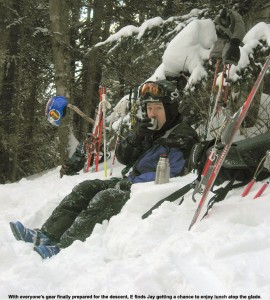
We’d packed a thermos full of tomato soup, and another full of hot chocolate, and I was really anxious to get some food and an energy recharge. Before I could relax though, I wanted to finish putting away all the skins and preparing all the gear for the descent. Ty and Dylan had clearly been more anxious for the end of the ascent than they were tired, because they were running around like animals having a big snowball fight, and E actually had to work on calming them down so that they weren’t too disruptive to other folks traveling on the trail. The boys played on, but finally I’d taken care of the gear; I fashioned myself a nice soft seat in the powder, and kicked back with some hot soup. I’d been waiting for that for quite a while. To sweeten the scene, just as we’d arrived, it had begun to snow. We had expected mostly clear skies earlier, but clouds moved in quickly, and before we knew it, big fat flakes were swirling all around us. One never knows what Mother Nature will throw at them up at 3,000’ in the Northern Greens, but the beauty of the falling snow was certainly appreciated. Sitting up there overlooking the glade with the fresh snow falling was quite a treat, and one of the folks passing by on the trail commented on what a great lunch spot it seemed to be.
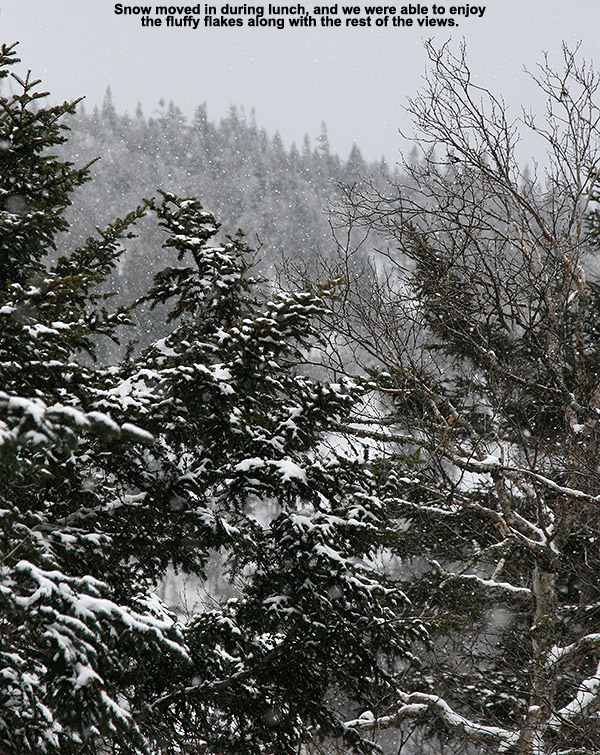
After a few rounds of soup, we were finally able to pull ourselves away from the superlative location for a descent of the glade. We found several inches of powder atop the base, but I was surprised that the snow wasn’t quite up to the standards that I thought it was going to be. There appeared to have been just enough traffic and or sun exposure that there was a bit of a crusty layer below the powder. That made the skiing challenging in those spots, but I was able to sneak in some nice turns in areas of untracked snow. Clearly I’m going to have to bring E and the boys back for another trip to experience the primo conditions that are often found there.
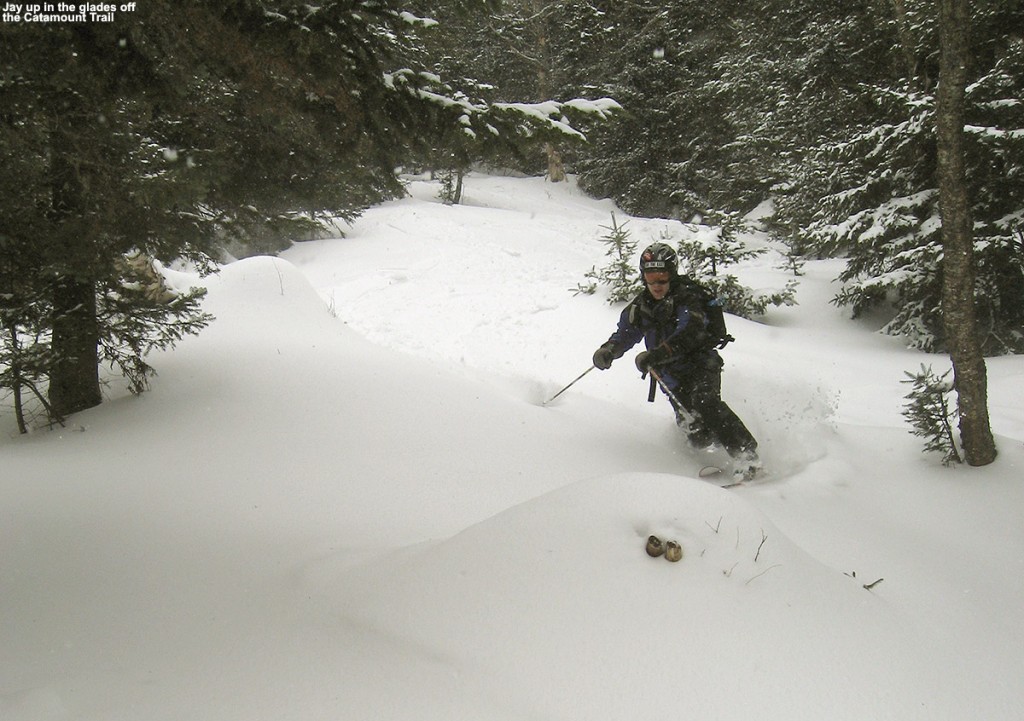
Once back on the Catamount Trail, Dylan took the lead again, and I told him that he could cruise as fast as he wanted down the trail. We came rocketing through the flats in the col, and Dylan continued to move along at a marvelous pace. While it’s generally a gentle downhill glide, there are a few short rises and I couldn’t believe how fast we covered the ground. The snow must have been a lot slower the last time I’d been out in that area, but before we knew it we were back at the intersection with Devil’s Drop where we’d had our first snack. We cruised further down the trail, and as soon as Ty and Dylan saw the Bryant Cabin, they headed right toward it like a shot. E and I hadn’t really planned to stop in there unless we needed to, but it was quickly obvious there was no way we were getting past it without a stop. Getting a chance to play around in the cabin is clearly one of the favorite parts of these trips for Ty and Dylan.
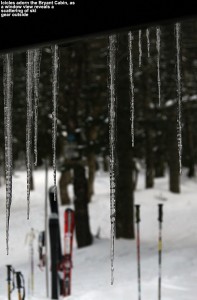
We pulled into the cabin, which was unoccupied and had no fire going in the woodstove, but with the fairly moderate outside temperature it was comfortable enough that the boys shed some layers. We got into the hot chocolate and snacks for a while, and the boys played around in the upstairs area that they like so much. We saw a couple of groups ascend the Bryant Trail and reach the cabin, but they congregated outside. Eventually the hot chocolate was spent, and we geared up for the final descent leg of the trip to the car.
We headed out on Gardiner’s Lane and onto North Slope, and my intent was to take E and the boys down through the North Slope and Gardiner’s Lane glade combination that I’d visited a lot last season. There hasn’t been a lot of traffic at the glade entrance though, so we sailed right past it and continued on North Slope. We ran into Kurt Ries, who was part of a large group collecting at the top of one of the drops on North Slope. Clearly they had a similar idea to us on this fine winter day. Having missed the glade I’d initially planned to visit, we cut off North Slope and simply explored the woods below. The snow was quite good, with 6+ inches of powder in many spots, and while we found a few good shots, there was nothing too outrageous in terms of providing an extensive amount of turns in open terrain. We connected onto Gardiner’s Lane, and recounted the last time we’d skied it where Dylan had had some binding issues and I’d needed to carry him. He talked about how much fun that had been, but I liked it better with him skiing. We finished off with a run through the Telemark Practice Slope and the associated glades, and cruised down Broadway to the car.
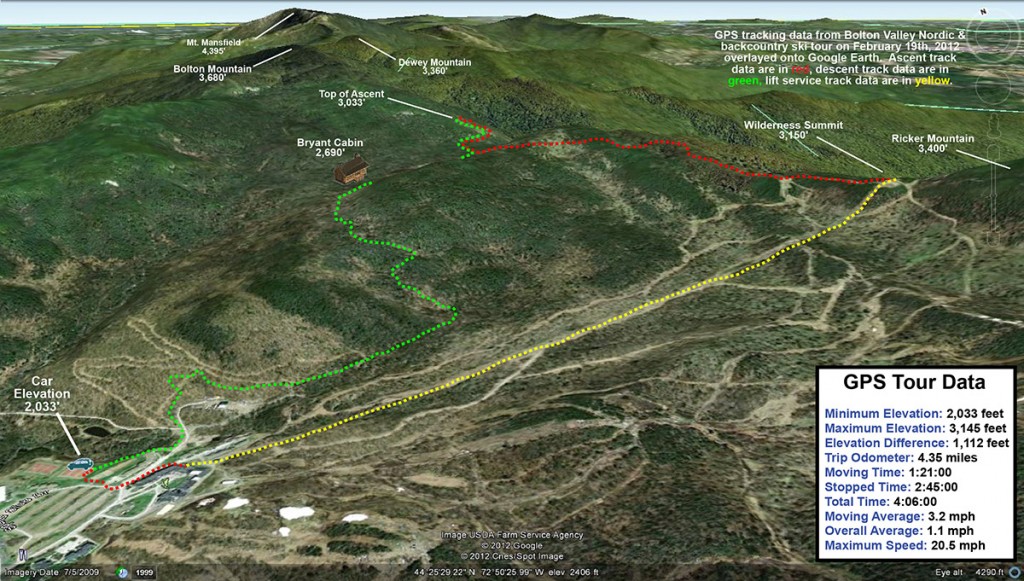
Checking the GPS at the car, it reported a tour length of 4.35 miles, with an overall elevation difference of 1,112’. It was certainly the boys’ biggest tour to date, and they continued to have energy at the end because they were quickly playing on top of the snowbanks in the parking lot while E and I packed up the gear. E said that she had a great time with her first trip on Heavenly Highway and the Catamount Trail beyond Bryant Cabin, and we saw plenty of opportunities for more exploration. Hopefully next time we can get even softer conditions and nail the route through those lower glades.












